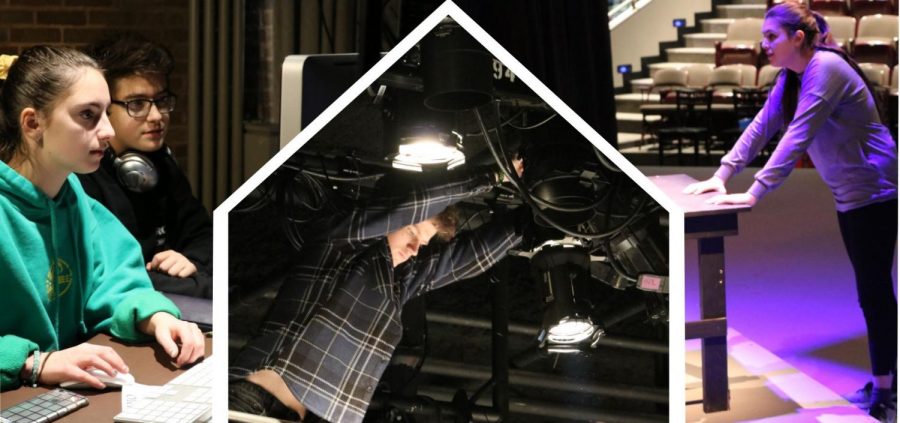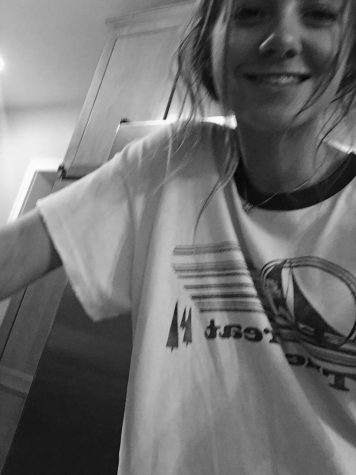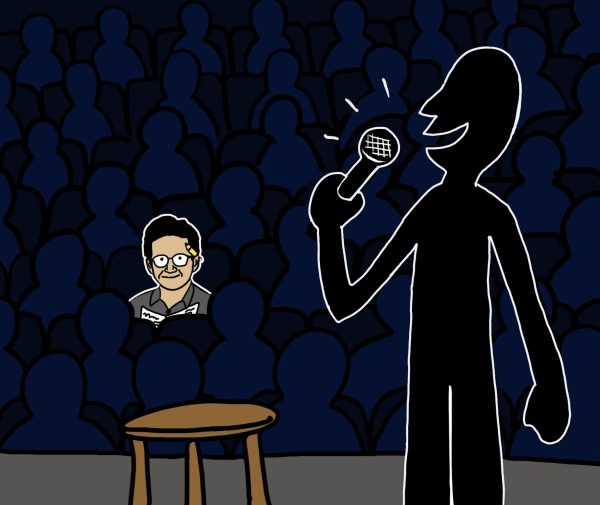Stage Crew: the basis of productions
Stage crew prepares for upcoming show.
February 18, 2019
42 days.
This is about the time Stage Crew has to complete several aspects of a production in order to put on a show, from the set itself to the costumes.
“We handle everything that has to do with a performance except for the acting,” theater director Aaron Carney says.
Members of the Stage Crew make sure that not only the actual design of the set matches the era of the show, but they also ensure that the lighting, sound and costumes are equally on point.
Besides the building and painting that comes with being part of Stage Crew, the bond that is formed among the members is what makes the club so special. The group itself is dynamic with some members working specifically on YAMO or shows like the spring musical, while other members will stay a part of Stage Crew for every production. As members come and go, there is always a place for newcomers.
“It is really fluid and changes dramatically with time when a new freshman class comes and senior class leaves,” senior technical director John Holmes says.
With upwards of 40 Stage Crew members, there is a job for everyone. According to Carney, students can primarily focus on lighting and this will be the main focus for a member during a single show. Other Stage Crew members can work backstage and help with quick changes. This format allows for students to have control of their time and interests while at Stage Crew.
When it comes to building. the set needs to match the era that the show takes place in. For example, the recent winter play, It’s a Wonderful Life, had sets resembling the 1940s. The members of the Stage Crew start working from anywhere between four to six weeks in advance.
When it comes to making the set, Carney will come up with a design, or he’ll let students take the lead. However, for shows such as YAMO, which is entirely run by students, crew members come up with the designs on their own. The set is built while the actors practice their lines.
For YAMO, the set design process starts with brainstorming how to incorporate one big set design for the show. This year, for example, they knew that they wanted to incorporate a bridge and have the orchestra on the stage floor. From there, the building can begin.
“It’s a lot of logistics, making sure that it won’t fall apart,” Holmes says.
These sets are not always the easiest to assemble. Last year’s Noises Off contained a stage that had to make a complete 360 degree turn. The set had a total of eight doors and two different perspectives, one from the point of view of a crew member and the other being the perspective from the audience itself.
“Incorporating lighting into the revolving set was supposed to be a big challenge, but it was a lot of fun,” Holmes says.
It is not until tech week that the crew members get to see the actors on set.
“Very few members of the crew get the opportunity to see any of the show until the first day of tech rehearsals,” senior technical director Dexter Benjamin says. “It is always exciting to see the actors begin to use the set and see everything come together.”
From an actress’ point of view, the crew is vital to a production’s success.
“It is because of them that we have a show,”senior actress Olivia Nicholson says.
Carney explains that all these sets are temporary and once the show is over, the set is taken down. The sets are often recycled until the pieces become too small or worn down to be used for another show.





















